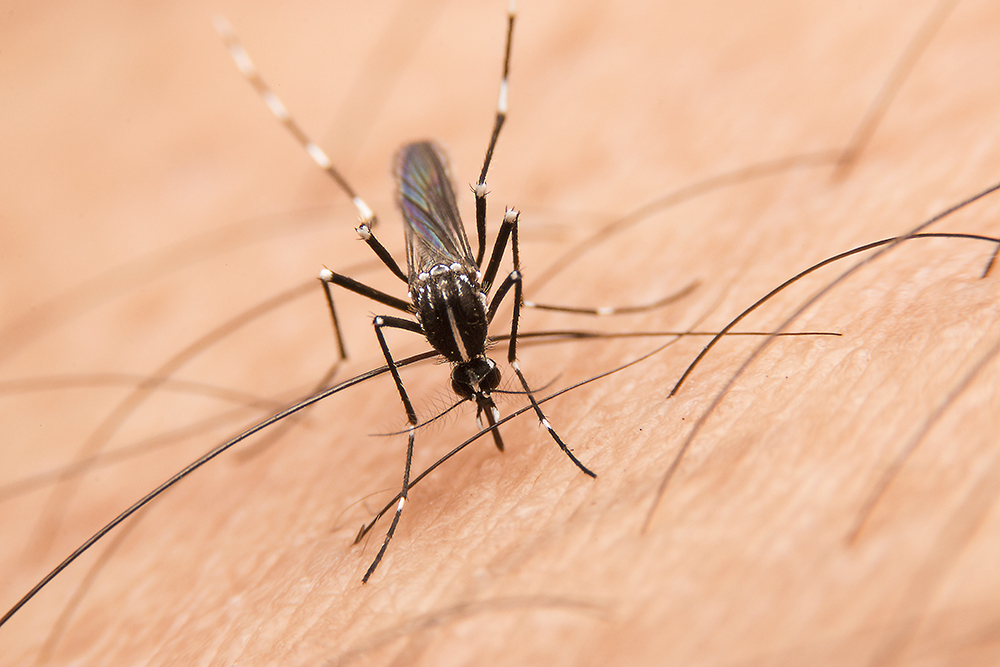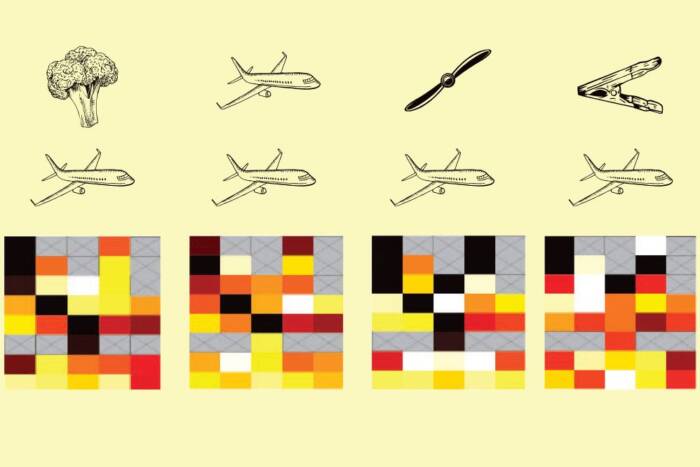West Nile infections are spiking. Here’s why the percentage of severe cases is so small

A female Culex pipiens mosquito, a prime vector of West Nile virus (Shutterstock)
The U.S. is currently in the midst of yet another West Nile virus (WNV) outbreak, with the CDC documenting(opens in new window) 880 cases across 46 states so far this year.
These numbers likely represent only a small fraction of total WNV infections, because diagnosis generally follows the appearance of symptoms, and 80% of people have no symptoms at all. Their immune systems quietly defeat the viral infection before sickness can take hold. Of the rest, about 19% get fever, headache, joint pain, rash, and gastrointestinal distress. The remaining 1% land in the hospital with encephalitis, an inflammation of the brain, or meningitis, an inflammation of the membranes surrounding the brain and spinal cord. For these unlucky few, the outcome can be coma, convulsions, vision loss, paralysis, and even death. (Anthony Fauci, former director of the National Institute of Allergy and Infectious Diseases, was hospitalized with one such severe case in August and is still recovering(opens in new window).) As a result, the virus is the leading cause of epidemic encephalitis in the U.S.
Unfortunately, autumn’s arrival hasn’t put a quick stop to the spread of this illness, which is transmitted by Culex mosquitos that have picked it up from infected birds. Though mosquito season typically ends with November’s cooler weather, our warming climate not only expands the geographic range of Culex and other species but also lengthens their period of activity.
As diseases carried by these pests become increasingly serious public health threats, scientists are searching for new ways to address them, including identifying what makes some people far more vulnerable than others. For instance, WNV has been circulating around the world for nearly 90 years, but until recently, no one knew why a small subset of the population is vulnerable to a virus that leaves most of us unharmed.
By studying WNV outbreaks in multiple countries going back 20 years, Rockefeller’s Jean-Laurent Casanova and his collaborators discovered that about 40% of cases of neuroinvasive WNV can be linked to the presence of immune system proteins called autoantibodies that sabotage the ability of type 1 interferons to launch the fight against the virus.
Interestingly, it isn’t the first time they’ve uncovered a link between severe symptoms and the presence of these autoantibodies; they’ve previously documented the phenomenon in cases of severe COVID and flu pneumonia.
We spoke to Casanova, a researcher with the university’s Stavros Niarchos Foundation Institute for Global Infectious Disease Research(opens in new window), about who is most at risk for a severe case of WNV; why it’s important to develop a screening process for them; and why we’re still waiting for a vaccine.
Let’s talk about the CDC case numbers first. As of October 1, 605 of 880 cases are classified as “neuroinvasive.” That’s close to 70%. Is that as scary as it sounds?
Not at all. Your odds of contracting such a severe case of WNV are more like 99-to-1. Remember, only a tiny percentage of the total number of cases are ever documented. So that 70% represents the relationship between the number of known cases and the number of people sick enough to be hospitalized. Actually, most people who’ve had WNV only find out after the fact, when a past infection is revealed during a blood screening for routine health care or a blood donation.
Those are pretty good odds.
Yes, even for the 1-in-5 people who have fever, headache, etc., which usually lasts for a couple of weeks. Fatigue seems to be the only symptom that can linger for weeks or months.
But the risk is not randomly distributed. If you have autoantibodies—especially if you’re older—it’s an entirely different story.
And you estimate about 1% of the world’s population carries these autoantibodies?
Yes. We determined that percentage by looking at a large cohort of 35,000 people in France, along with smaller cohorts in many other countries. But it jumps from 4% to 6% for people over 65. We’re not sure why yet, but older people are four to six times more likely to have them. We’re in the process of studying sets of twins in this age bracket to try to find out why.
How do the autoantibodies change the immune response to an infection?
They bind to type 1 interferons, which are very important signaling proteins deployed by a variety of cells in the fight against viruses, including neurons in the brain. Normally, type 1 interferons bind to their own receptors, triggering a signaling pathway that activates hundreds of interferon-stimulated genes that help cells shut down viral replication, among other activities. This entire process gets blocked when the autoantibodies bind to the interferons instead.
Can you talk about the research behind this finding?
I collaborate with physician-scientists around the world who have documented hundreds of cases of neuroinvasive WNV going back more than two decades. By studying tissue samples from these patients, we’ve found that 40% of hospitalized people had autoantibodies against type I interferons.
It’s important to note that these patients had these autoantibodies before being infected with the virus, which indicates this is some sort of immunological vulnerability that precedes viral infection and explains viral disease.
Would it be fair to call this a newly identified autoimmune condition?
Yes. These autoantibodies are disease-causing by themselves, in the sense that their many carriers are at great risk of contracting various severe viral diseases. People who have them can therefore be categorized as having an autoimmune condition.
Are people with this condition also vulnerable to severe or fatal outcomes from other viruses?
Absolutely. We’ve documented this connection multiple times. For instance, we’ve found that 5% of people with severe influenza, 15% of people with severe Covid, 25% of people with severe MERS pneumonia, and—as we just published in a new paper(opens in new window) in the Journal of Experimental Medicine—10% of people with severe tick-borne encephalitis are sick because of the autoantibodies. We’re also starting to find them in rare viral diseases too, such as those caused by the Powassan and Usutu viruses, which are in the same family as West Nile and tick-borne virus. I’m almost certain we’ll find more examples of the autoantibodies’ impact in other kinds of viral encephalitis or pneumonia.
How can we use this information to improve health outcomes?
I would suggest blood screenings for the autoantibodies in specific populations: people who’ve had a severe viral illness in the past; people who have an autoimmune condition, because we know these autoantibodies are more common in them; and people 65 and older. And this should be done systematically rather than in response to outbreaks. That way people who have the autoantibodies take as many precautions as possible to avoid getting infected. Actually, we’re currently looking into ways to help develop commercially available autoantibody screenings for WNV and other diseases.
But even if we achieve systematic screening in the future, prevention is really the most important thing when it comes to arboviruses like West Nile, dengue, yellow fever, tick-borne encephalitis, and Chikungunya, even though we have vaccines for many of them. Avoid places where mosquitoes and ticks are most active, such as areas with standing water or the forest—especially at sunrise or sunset. If the environments can’t be avoided, use a strong bug repellent.
Why isn’t there a vaccine for West Nile? One exists for horses, which account for 97% of non-human cases, but not for us.
I’m not a virologist or epidemiologist, so I’m not the best person to answer that, but I think the unpredictability of outbreaks is one factor; it makes it hard to set up and enroll vaccine efficacy trials. The unpredictability of whether any vaccine may work or not is another. Vaccine design has remained as empirical in 2024 as it was when Pasteur invented the first vaccine in 1881.
Speaking of horses, there have been 13 cases of eastern equine encephalitis (EEE) virus in humans in 2024. So far, two have been fatal. Could autoantibodies be connected to an increased vulnerability to this disease as well?
I haven’t studied EEE yet—I’m trying to recruit patients now—but we do know it’s another single-stranded RNA virus like West Nile, albeit in a different family. So yes, I do suspect that autoantibodies against type I interferons may be playing a role.



